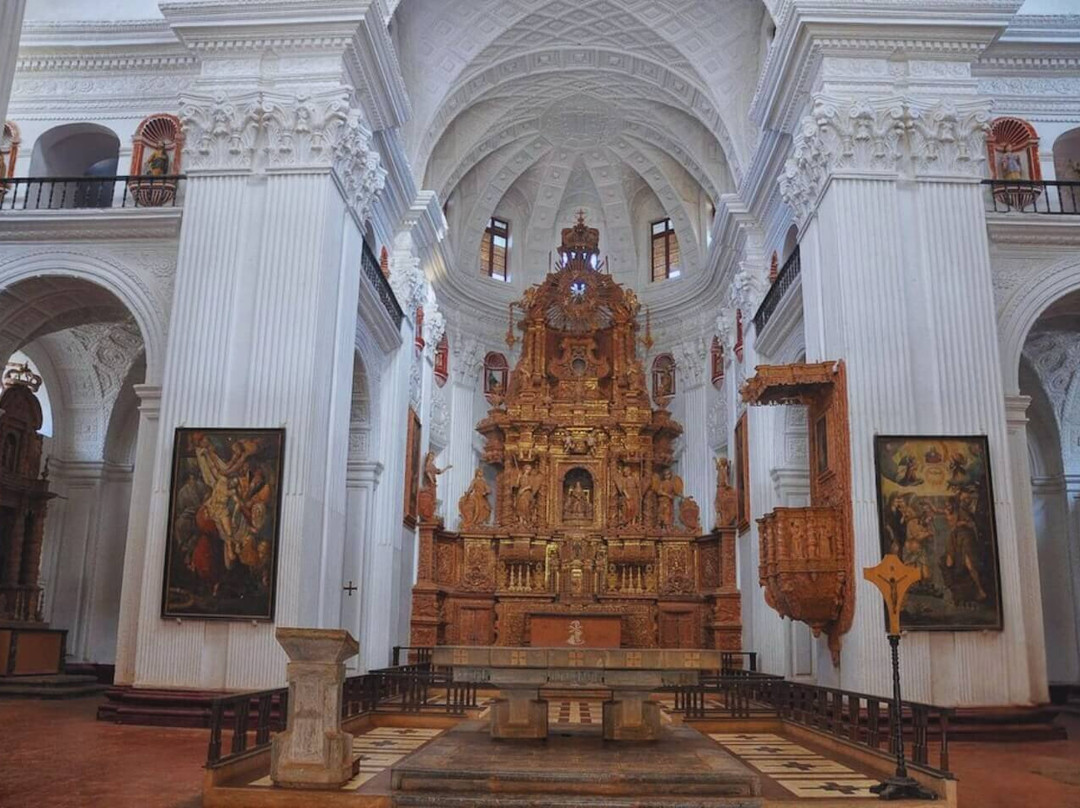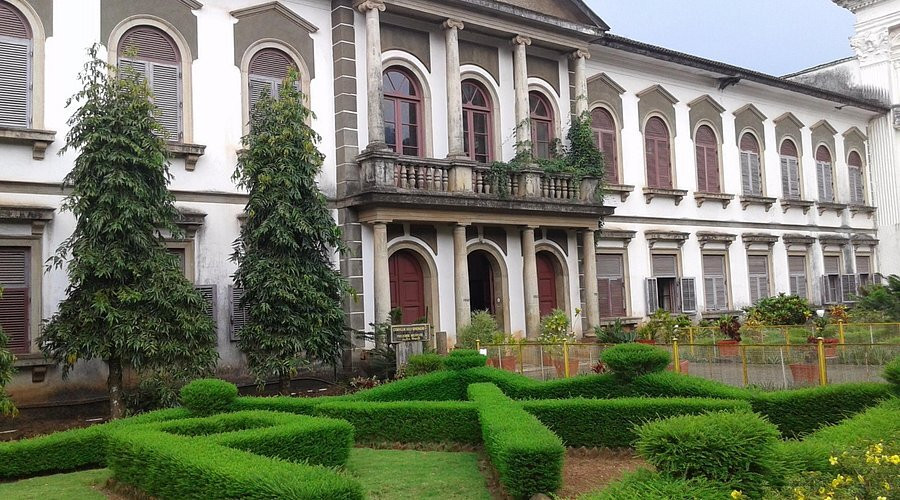的点评
Interesting History
圣卡杰坦教堂的点评
点评:Please note, the main photograph on this site purporting to be that of St. Cajetan's Church is actually The Pastoral Institute St Pius X (Convent of St. Cajetan).
This church named after St Cajetan of Thiene is unique in that it is the last remaining example of Italian architecture – not Portuguese- in Goa. Built by Theatine friars, it was completed in 1661 in the Corinthian style. Goa was the first Portuguese colony in Asia, and remained under colonial rule until 1961, so dealing with the Italian Theatines was not cordial. Apart from building hospitals for the poor, the Theatines are credited with championing the distribution of Holy Communion to all Goan Catholics, irrespective. It’s crowned with a hemispherical dome like that at St. Peter’s Basilica in Rome and other subtle differences from the Portuguese Baroque style. Features include a 72-foot-deep well, gilded reredos (ornamental screens), an altar dedicated to Saint Cajetan and paintings depicting his life. There is also the impressive adjoining Convent of St. Cajetan.
This church named after St Cajetan of Thiene is unique in that it is the last remaining example of Italian architecture – not Portuguese- in Goa. Built by Theatine friars, it was completed in 1661 in the Corinthian style. Goa was the first Portuguese colony in Asia, and remained under colonial rule until 1961, so dealing with the Italian Theatines was not cordial. Apart from building hospitals for the poor, the Theatines are credited with championing the distribution of Holy Communion to all Goan Catholics, irrespective. It’s crowned with a hemispherical dome like that at St. Peter’s Basilica in Rome and other subtle differences from the Portuguese Baroque style. Features include a 72-foot-deep well, gilded reredos (ornamental screens), an altar dedicated to Saint Cajetan and paintings depicting his life. There is also the impressive adjoining Convent of St. Cajetan.
翻译:请注意,本网站上声称是圣卡耶坦教堂的主要照片实际上是圣庇护十世牧灵学院(圣卡耶坦修道院)。
这座以圣卡耶坦·蒂耶内命名的教堂是独一无二的,因为它是果阿仅存的意大利建筑(而非葡萄牙建筑)。它由泰阿提纳修道士建造,于 1661 年建成,采用科林斯风格。果阿是亚洲的第一个葡萄牙殖民地,直到 1961 年才被殖民统治,因此与意大利泰阿提纳修道士打交道并不愉快。除了为穷人建造医院外,泰阿提纳修道士还因倡导向所有果阿天主教徒分发圣餐而受到赞誉,无论他们是否信奉天主教。它的顶部有一个半球形圆顶,就像罗马的圣彼得大教堂一样,并且与葡萄牙巴洛克风格有其他细微的差别。特色包括一口 72 英尺深的井、镀金的祭坛背饰(装饰屏风)、一座献给圣卡耶坦的祭坛和描绘他生平的画作。毗邻的圣卡耶坦修道院也令人印象深刻。
这座以圣卡耶坦·蒂耶内命名的教堂是独一无二的,因为它是果阿仅存的意大利建筑(而非葡萄牙建筑)。它由泰阿提纳修道士建造,于 1661 年建成,采用科林斯风格。果阿是亚洲的第一个葡萄牙殖民地,直到 1961 年才被殖民统治,因此与意大利泰阿提纳修道士打交道并不愉快。除了为穷人建造医院外,泰阿提纳修道士还因倡导向所有果阿天主教徒分发圣餐而受到赞誉,无论他们是否信奉天主教。它的顶部有一个半球形圆顶,就像罗马的圣彼得大教堂一样,并且与葡萄牙巴洛克风格有其他细微的差别。特色包括一口 72 英尺深的井、镀金的祭坛背饰(装饰屏风)、一座献给圣卡耶坦的祭坛和描绘他生平的画作。毗邻的圣卡耶坦修道院也令人印象深刻。



此点评仅代表旅行者个人的主观意见,并不代表TripAdvisor以及其合作方的意见。
关于我们
|新闻动态
|商务合作
|会员中心
|业主中心
|常见问题
|意见反馈
|联系我们
|营业执照
© 2025 Tripadvisor 版权所有。
使用条款 |隐私政策 |网站工作原理
部分照片由 VFM Leonardo 提供。
* Tripadvisor不是旅行社,也不是旅游预订服务代理商。我们提供免费、客观、公正的旅游资讯服务。 (显示更多)
TripAdvisor LLC 既不是预订代理商,也不是旅游运营商,不会向网站用户收取任何服务费。 按照规定,在 Tripadvisor 发布机票价格、游览和旅行套餐的合作伙伴(航空公司、旅行提供商及预订代理商),其标价须包含所有费用和附加费用。 例如, 机场出入境税费、消费税与其他服务费、手续费、杂费及附加费用。 当您向我们的某个合作伙伴进行预订时,请务必查阅他们的网站以了解当地行政部门要求的所有适用费用的具体情况。 除非另有说明,机票价格通常指的是一个人的价格(以人民币计)。
为方便起见,TripAdvisor LLC 根据从我们的预订合作伙伴获取的空房率计算每个酒店的均价。 对于游览和景点来说,所显示价格通常是每位成人的最低可用价格。 对于列出的任何旅行套餐或优惠,TripAdvisor LLC 无法保证任何特定的费率或价格。 此外,酒店均价每晚会更新,并以您的首选币种表示(使用现行汇率)。 由于这些已换算的价格是预估价格,因此,有关具体金额和币种请与预订网站进行核实。
此外,TripAdvisor LLC 无法保证我们网站上宣传的价格随时有效。 标价可能需要预订一定天数才能生效,或有不可用日期、使用条件或限制。
TripAdvisor公司对外部网站的内容一概不负责。优惠价格中不含税和其他费用。
ICP证:沪B2-20200433
沪ICP备20013175号
 沪公网安备31010502005427号
沪公网安备31010502005427号鹰程信息技术(上海)有限公司
货币/国家及地区
¥CNY
中国

